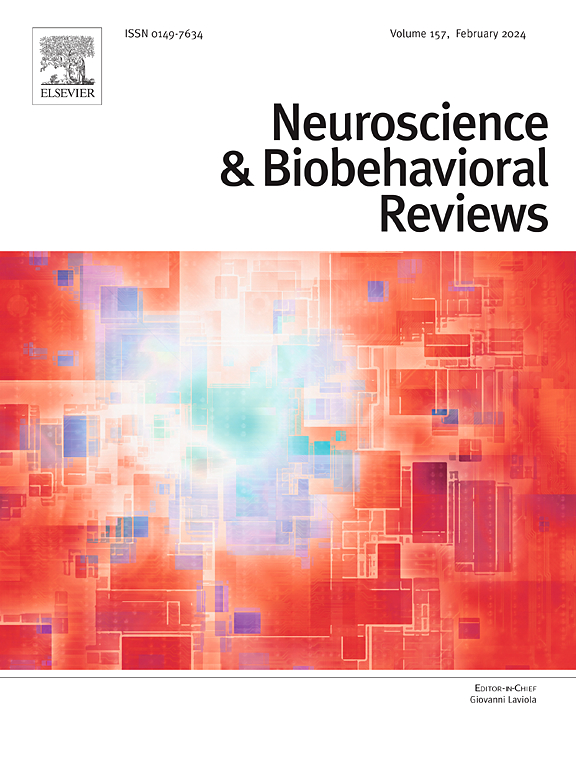Perception of biological motion and actions in Autism: A systematic review
IF 7.9
1区 医学
Q1 BEHAVIORAL SCIENCES
引用次数: 0
Abstract
Detecting and recognising the Biological Motion (BM) of other people provides essential information to understand others’ actions and intentions, thus facilitating social interactions. Difficulties with social interaction are a hallmark of autism and may stem from altered perceptual recognition or interpretation of others’ actions. This systematic review investigates whether BM perception in autistic individuals is influenced by the different categories of BM processing and the methodological differences between different BM paradigms. It also explores potential overlap between performance in non-biological motion tasks and BM perception. A total of 51 empirical studies compared BM task performance between 1066 autistic individuals and 1086 non-autistic individuals. Autistic individuals demonstrated poorer performance in BM discrimination tasks that involved greater social cognition. There were no consistent patterns regarding methodological differences across the tasks, such as stimulus types, motion varieties, or level of instructions. When investigated, poorer performance in BM tasks was often mirrored in non-biological motion tasks, suggesting potential overlap in underlying processing mechanisms. Future research should explore a broader range of ages, directly compare performances across tasks, and level of instructions to advance understanding of perceptual processing in autism.
自闭症患者对生物运动和行为的感知:一项系统综述。
检测和识别他人的生物运动(BM)为理解他人的行为和意图提供了必要的信息,从而促进了社会互动。社会交往困难是自闭症的一个标志,可能源于对他人行为的感知识别或解释的改变。本研究旨在探讨自闭症个体的认知是否受到不同类型的认知加工的影响,以及不同认知范式之间的方法差异。它还探讨了非生物运动任务的表现和BM感知之间的潜在重叠。共有51项实证研究比较了1066名自闭症个体和1086名非自闭症个体的BM任务表现。自闭症个体在涉及更多社会认知的BM歧视任务中表现较差。不同任务的方法差异没有一致的模式,比如刺激类型、动作种类或指令水平。BM任务的较差表现通常反映在非生物运动任务中,这表明潜在的处理机制存在重叠。未来的研究应该探索更广泛的年龄范围,直接比较不同任务的表现,以及指导水平,以促进对自闭症感知加工的理解。
本文章由计算机程序翻译,如有差异,请以英文原文为准。
求助全文
约1分钟内获得全文
求助全文
来源期刊
CiteScore
14.20
自引率
3.70%
发文量
466
审稿时长
6 months
期刊介绍:
The official journal of the International Behavioral Neuroscience Society publishes original and significant review articles that explore the intersection between neuroscience and the study of psychological processes and behavior. The journal also welcomes articles that primarily focus on psychological processes and behavior, as long as they have relevance to one or more areas of neuroscience.

 求助内容:
求助内容: 应助结果提醒方式:
应助结果提醒方式:


